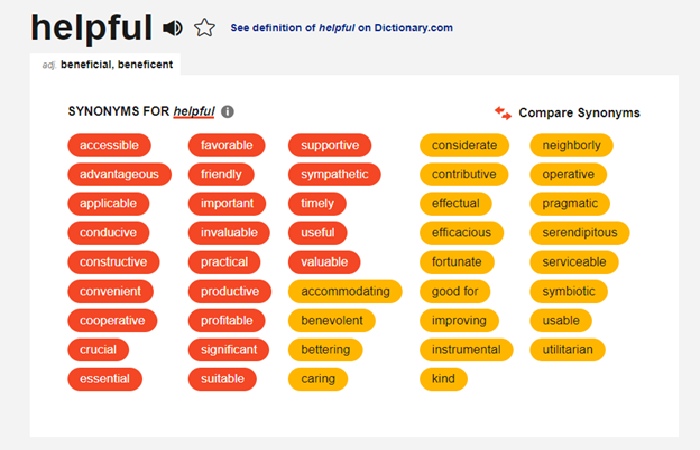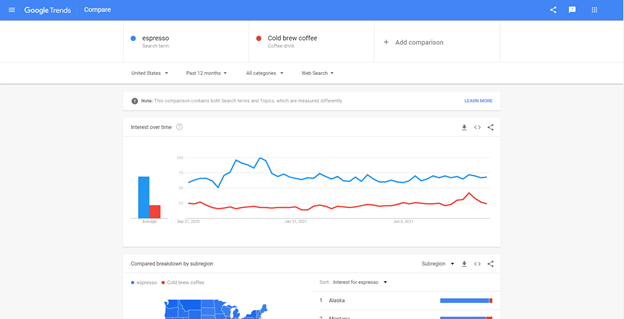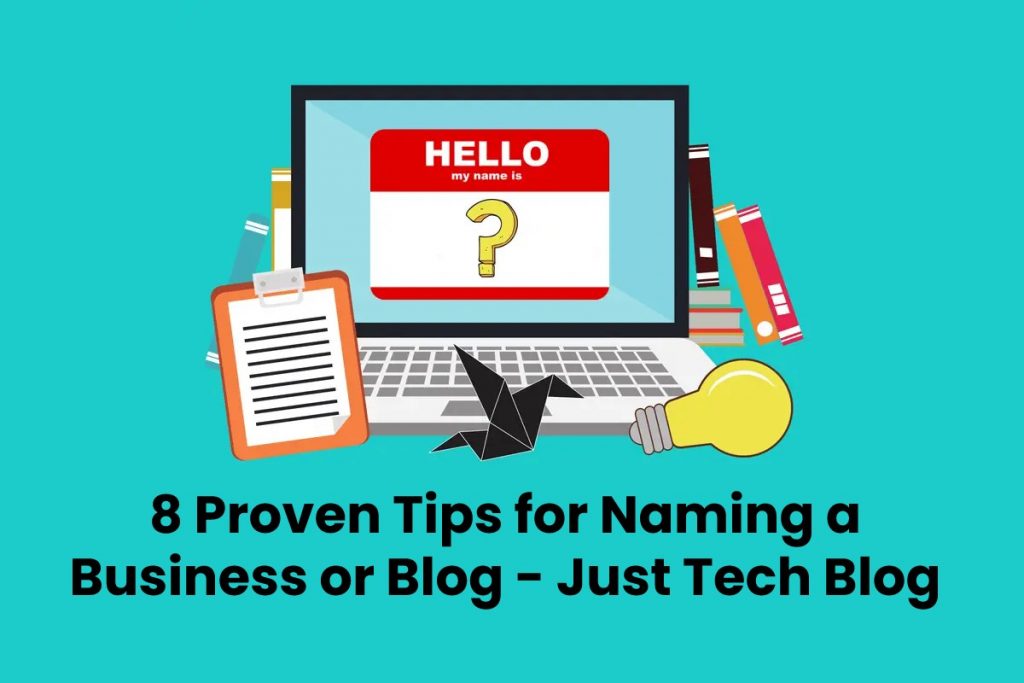Proven Tips for Naming a Business or Blog – Coming up with a good name is the first step in building an online presence. It is the core of your business identity, helping to attract attention and leave lasting impressions.
However, it can be difficult to choose a catchy name when you first start a business. It requires some research and brainstorming.
In this article, we will give you eight tips to help create a catchy and suitable name for your business or blog.
Table of Contents
1. Research Your Niche and Competitors
Taking into account your business or blog’s main characteristics and target audience can help you decide the best name for it. Good names help brands attract people interested in their industry and gain brand loyalty.
That’s because some names convey specific features to the business and make it more relevant to a particular niche. For example, brand names like Tesla and Neuralink make us think of innovation and futuristic technology.
One of the best ways to research your market niche is to find out what your competitors are doing.
Learn from bigger companies and see what works for them. Check if they follow any trends and how people react to them. However, avoid choosing a similar name to your competitors – it needs to be unique in order to stand out.
Also, make sure to use a domain name checker to see if your desired name is still available for the website domain.
2. Define Your Blog Objectives
Define the reason why you want to blog and what you want to achieve with it. These are part of your blog’s core identity, and knowing them is a great start when brainstorming for a blog name.
Developing a blog’s name from its objective can help people understand what they will find when visiting it. For instance, MomAnswer is a good name for a blog that provides tips and tricks for new mothers and covers parenting topics in general.

However, don’t feel pressured to include a deeper meaning into your blog or business name. If you already have a preferred name with no correlation to the blog’s purposes, it might be better to stick with it.
3. Use a Thesaurus or Books
Many entrepreneurs use generic words as their brand names. Using common words for your business or blog name brings a sense of familiarity. However, if it is too generic, the name may lose its uniqueness and fail to stand out among the competitors.
Because of that, business owners need to enrich their vocabulary and find new words to represent their companies. Reading more books is a good way to widen your knowledge and can provide inspiration to name your business.
Start With Why by Simon Sinek, and Hello, My Name Is Awesome by Alexandra Watkins are some of the best branding books to consider. Another useful tool to help you find unique words for your business name is a thesaurus.

Websites like thesaurus.com are a good place to find less common synonyms to use for your brand. Start with words that describe your business or your target market to find synonyms that can help your business name be unique and brandable.
4. Keep the Name Short and Simple
Consider choosing a short and simple name for your business or blog. A shorter name benefits most products since it is easy to say, understand, and spell, allowing people to easily find your business or blog.
Shorter and simpler names also tend to be more memorable. Think about popular brands like KFC, which applied this by using abbreviations as their name. Dunkin’ Donuts even decided to shorten its name to Dunkin‘ in 2018 to improve its branding.
This rule also applies to your domain name. The ideal domain name length uses between 6-14 characters. According to research, shorter domain names yield higher traffic and website rankings.
5. Include a Focus Keyword
Incorporating keywords into your domain name help improve its exposure. Strategic keyword usage is the core of SEO. It helps your business website or blog to rank higher in search engine results pages (SERPs).
The term focus keyword refers to a search term you want a page or post to rank for. For example, coffee, cold brew, roast, and espresso are relevant keywords for running a coffee shop.

Tools like Google Trends and Answer the Public help you research relevant keywords for your business name. However, avoid stuffing keywords into your domain name since search engines like Google may mark your site as spam and lower its ranking.
6. Make It Relevant for the Audience
Using a trendy word for your business name might sound like a good idea since it makes your brand seem youthful and up-to-date. However, if your target customers are not familiar with the word and its meaning, this might harm your brand.
In that case, your target customers may find it difficult to relate to your brand, resulting in a lack of interest regardless of your product quality. Thus, it is in your best interest to understand the target audience’s characteristics and preferences before deciding on a name.
Having a unique business name is the goal, but avoid choosing one that might confuse your audience. To simplify the process, list some keywords related to the business that potential customers can easily understand.

Consider using tools like Bust-A-Name to help you find available domain names related to these keywords.
7. Discover Alternative Domain Extensions
Top-level domain (TLD) is the part of a website’s URL that comes after the final dot. It includes .com, .net, and .org.
Each TLD is suitable for a different purpose and industry, but the most popular one is .com, used by 52.3% of websites as of April 2021.
Thus, getting the desired domain name with a .com extension tends to be harder due to its high popularity – it may be better to look for alternative domain extensions. For example, less popular TLDs like .tech and .io are good choices if you run a tech-related business or blog.
Another advantage of choosing alternative TLDs is that they tend to be cheaper. Visit domain name registrars to research domain prices for different extensions.
8. Leave Room for Expansion
Having a specific and niche-related name is good for your business or blog. However, avoid choosing one that limits your growth. Your business might offer different kinds of products or services in the future, and an overly specific name will put you at a disadvantage in that situation.
For example, John’s Mattress Cleaning Service may fail to attract customers when John decides to expand his business to other home cleaning services. Also, changing your business name midway can be a frustrating and costly process.
John’s Cleaning Service or John’s House Cleaning would probably be better options. Choose something general but still descriptive enough to let the audience identify what product or service your business offers.
Conclusion
Creating a name for your business requires a lot of research and brainstorming. Entrepreneurs need to pay attention to various information regarding their businesses and target market before deciding on a name.
In this article, we have looked at eight steps that can help you during the brainstorming process:
- Research your niche and competitors
- Define your blog objectives
- Use a thesaurus or books
- Keep the name short and simple
- Include a focus keyword
- Make it relevant for the audience
- Discover alternative domain extensions
- Leave room for expansion
Follow the tips presented in this article, and hopefully, you will come up with a catchy and suitable name for your business or blog more easily.

